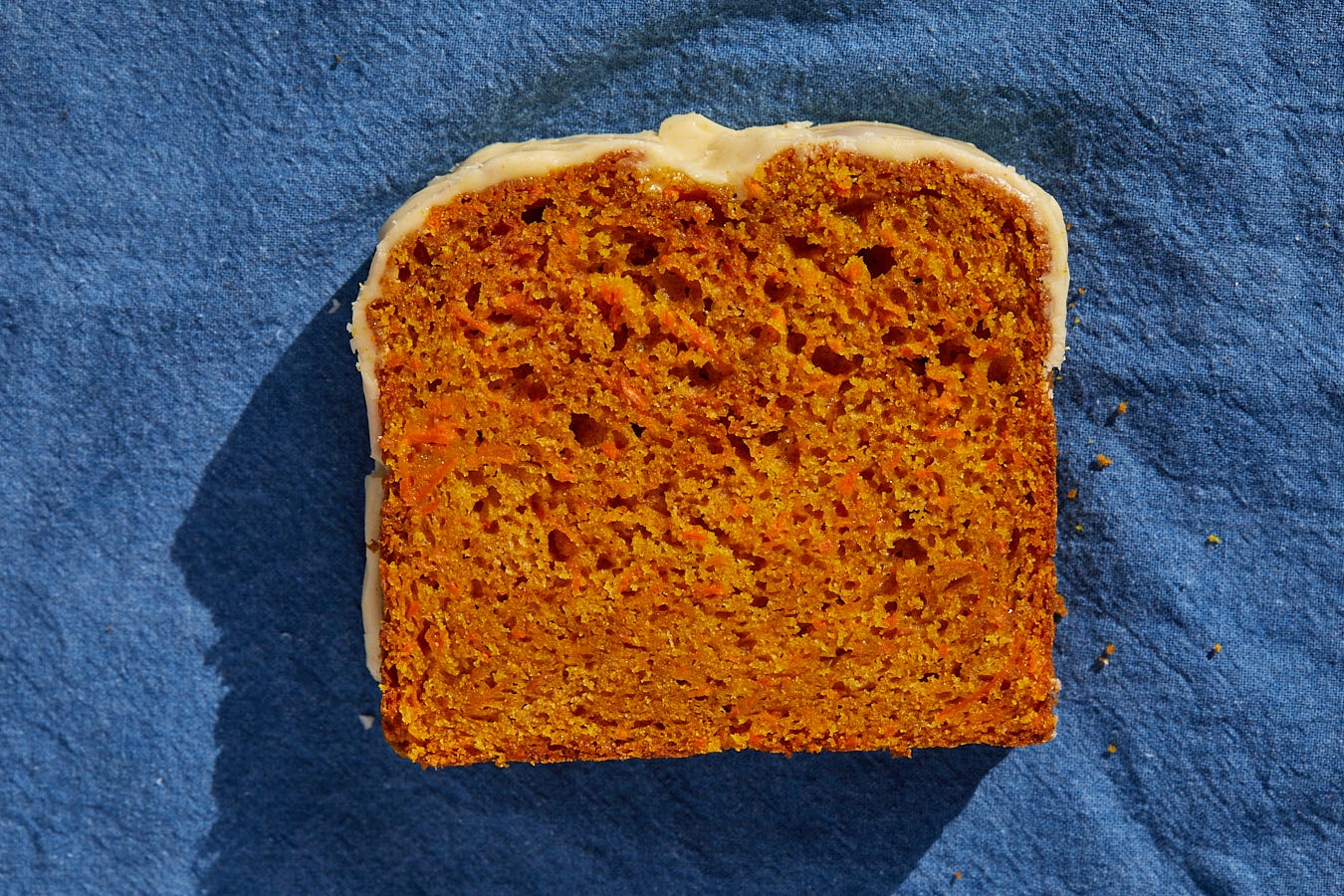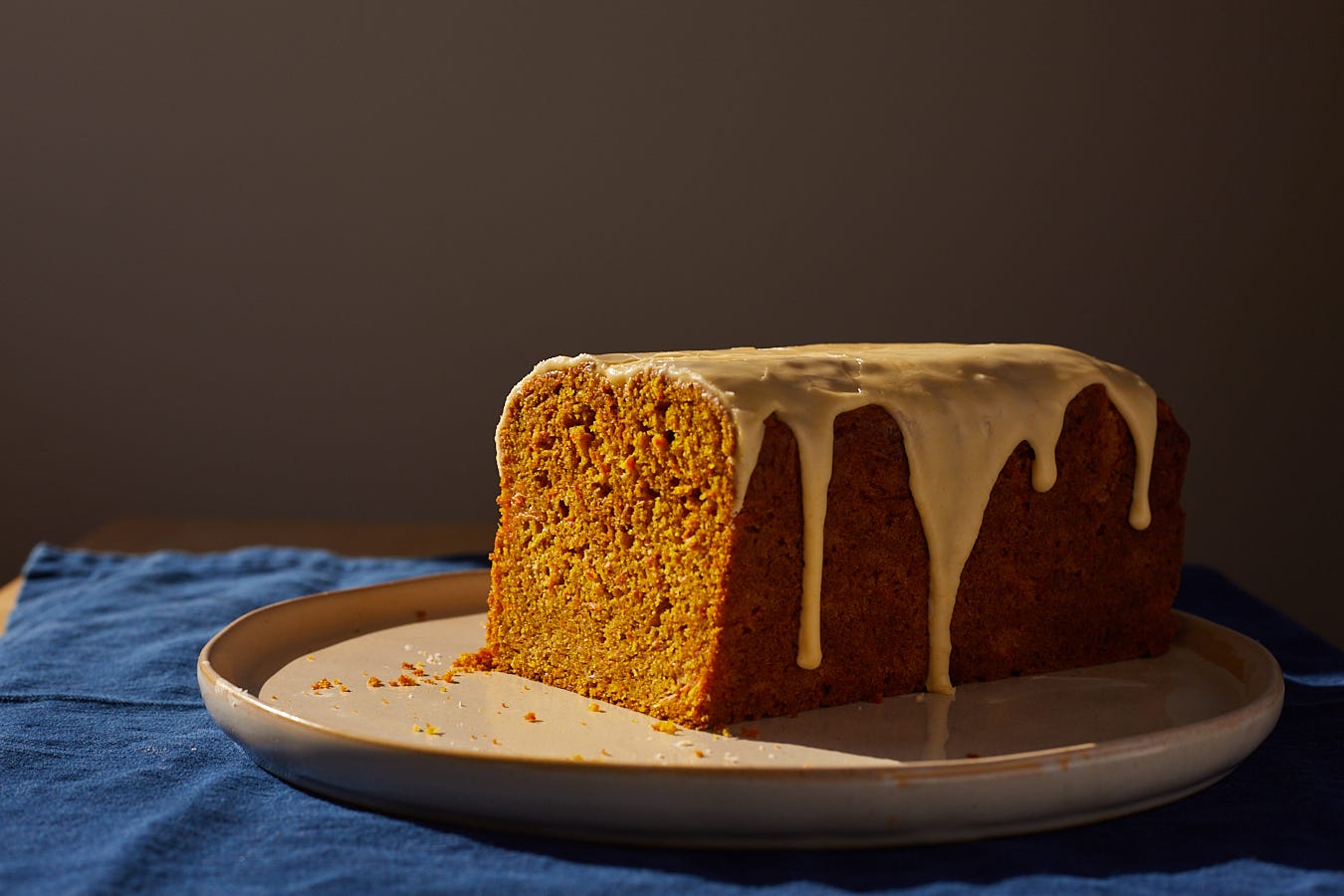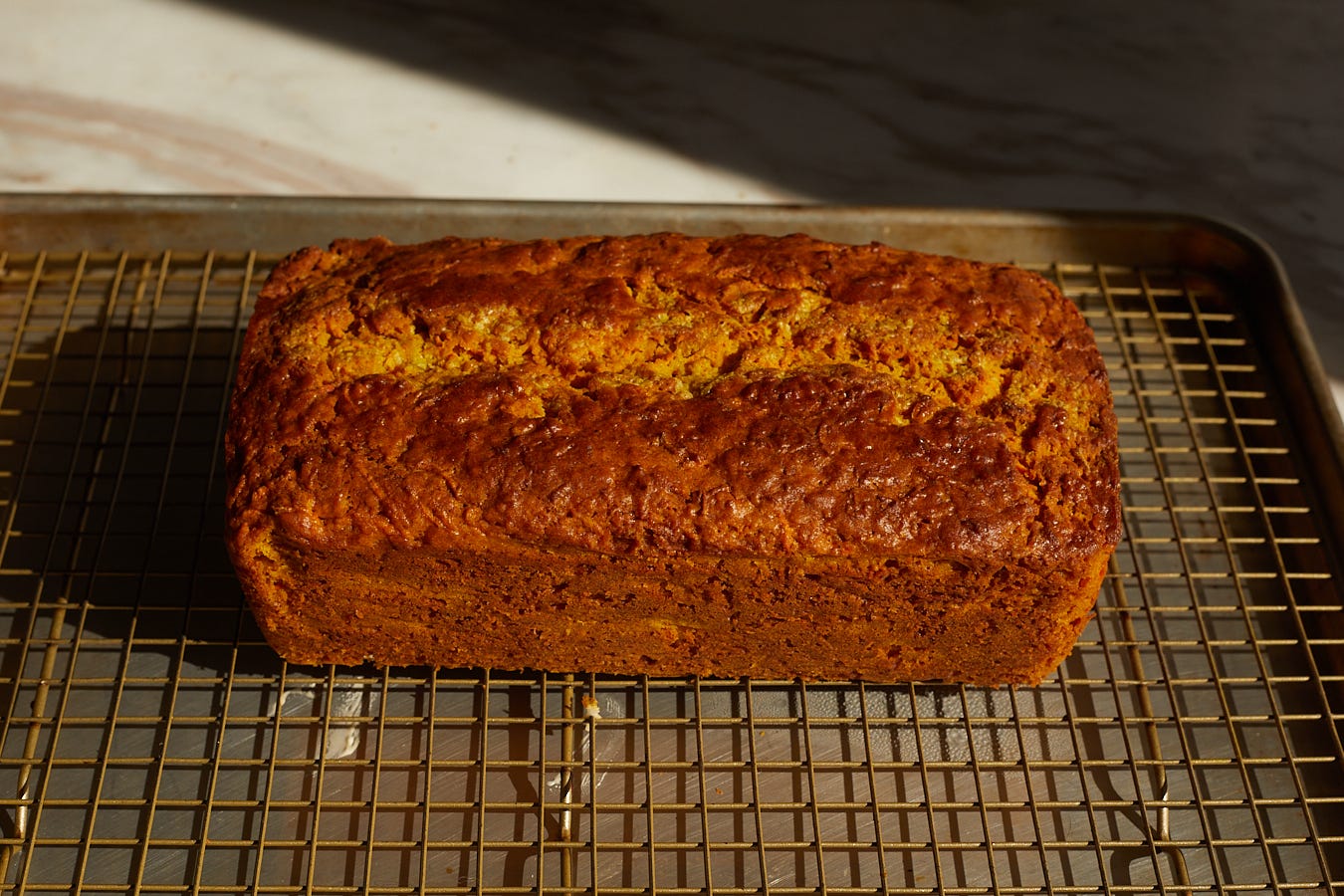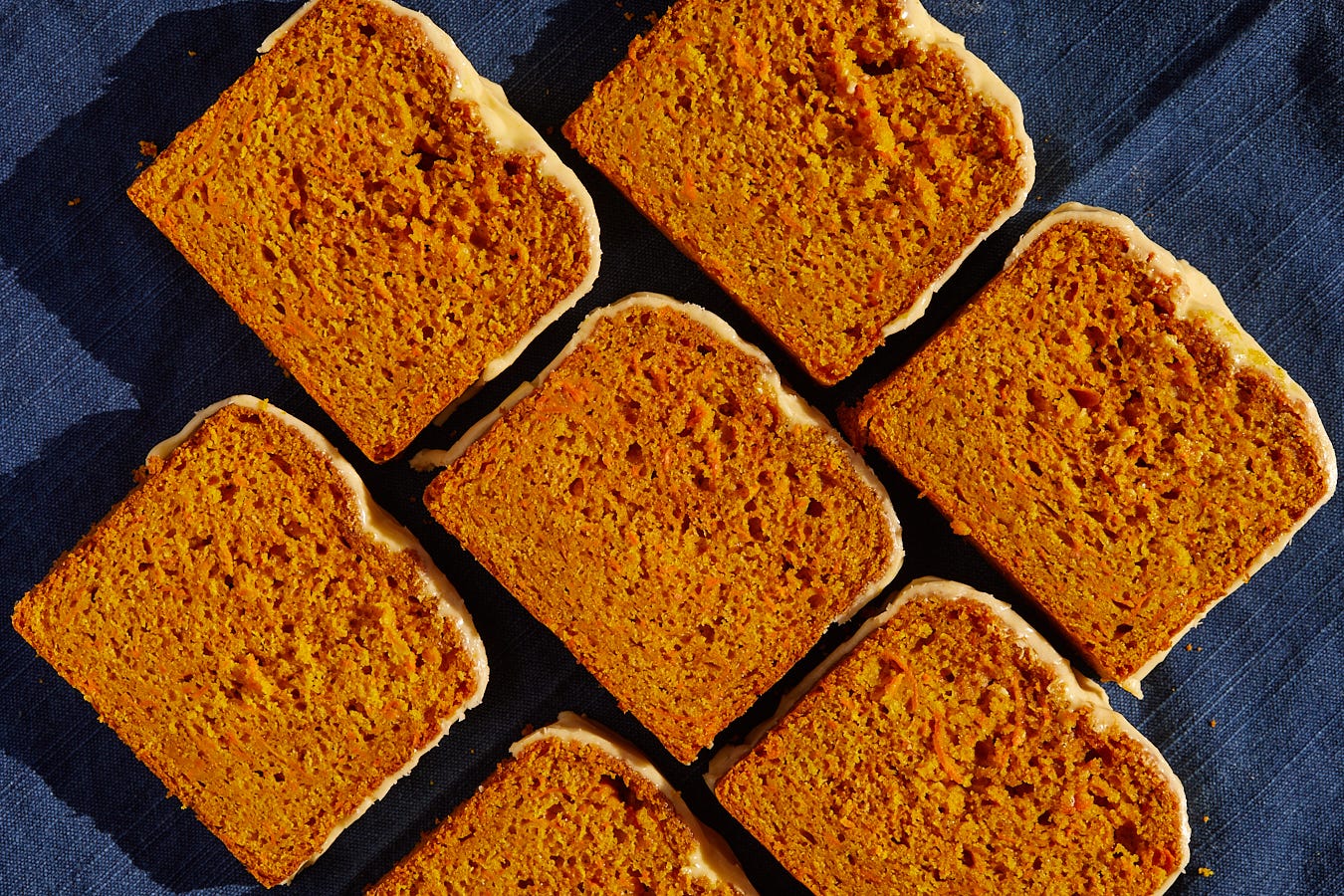You know that thing when people post a cryptic Instagram selfie of them in a hospital bed with absolutely no context, and then minutes or hours later post again explaining what’s going on and “I’m sorry to scare everyone!” It might be a funny or quirky thing to post, or just super dramatic, until you realize not everyone might know that you’re okay (or maybe not!) and you have to do damage control. It’s always hard for me to believe that people still do this — although it’s not because I also like getting attention on the internet.
Which is why I’m telling you now that when I was visiting my family in Virginia this weekend, I too had to go to the hospital — I’M FINE. See how quickly I clarified that? Anyway, the issue I went to the ER for was kind of a false alarm, so really looking forward to getting that insane bill (out of network! I have terrible insurance!) and using it to set my house on fire. There’s really nothing like having your mommy and daddy bring you to the emergency room as a 29-year-old to make you feel youthful again!
All this to say sorry this newsletter is a little late (we have never run on a real schedule here so I don’t know why I’m apologizing.) Let’s get to it!
Updates
No updates this week!
EGO Recommends
Podcast: Unbiased Science
Around the holidays last year, while I was making around 200 cookies for cookies boxes, I got sucked into a podcast about the dangers of sugar. It was an episode of the wildly popular Huberman Lab podcast, hosted by Stanford professor Andrew Huberman. I had listened to a couple other episodes, but overall, he wasn’t my thing. But this one caught my attention, and scared the shit out of me, as they completely demonized the sweet stuff so much it made even me wonder if I should start baking with less sugar. Luckily, that fear-mongered paranoia of sugar didn’t last long after seeing a Thread on, well, Threads. It was Andrea Love, an immunologist, microbiologist and expert in science education and misinformation, and she was calling out Andrew Huberman for his and his guests habit of spreading misinformation.
Her podcast Unbiased Science, which she hosted with public health expert Jessica Steier (Andrea recently left the show) is devoted to debunking health myths and bringing some clarity to the chaos of online wellness grifter culture. So naturally, they had a field day with their episode on Huberman. I was going to recommend their show anyway, but since New York Magazine published a seemingly damning profile of Huberman yesterday (which I have not read yet!), it does feel even more relevant.
This Week’s Recipe
I don’t know why this combination popped into my little head. It might just be by virtue of the fact that both carrots and turmeric are….. orange! And I wanted to give a lift to the traditional offering of carrot cake that’s popular around Easter, which of course is lovely but can be cloying and a bit heavy? Carrots are herbaceous and grassy and earthy (they come out of the earth!) and turmeric shares that earthy flavor (it is also made from a root!) so one could argue they go together.
In this loaf, carrots are folded into a batter flavored with a little bit of cinnamon and ginger — and a lot of ground turmeric. In my research, I found that most recipes don’t use as much carrot as I thought. And since carrots don’t have a ton of flavor (usually the warm spices like cinnamon and nutmeg etc. make up for that) I wanted to include more. So, yes, with 10 ounces of the shredded orange stuff, this cake has an above average carrot ratio — which, along with the turmeric and cinnamon, accounts for the near-neon color.
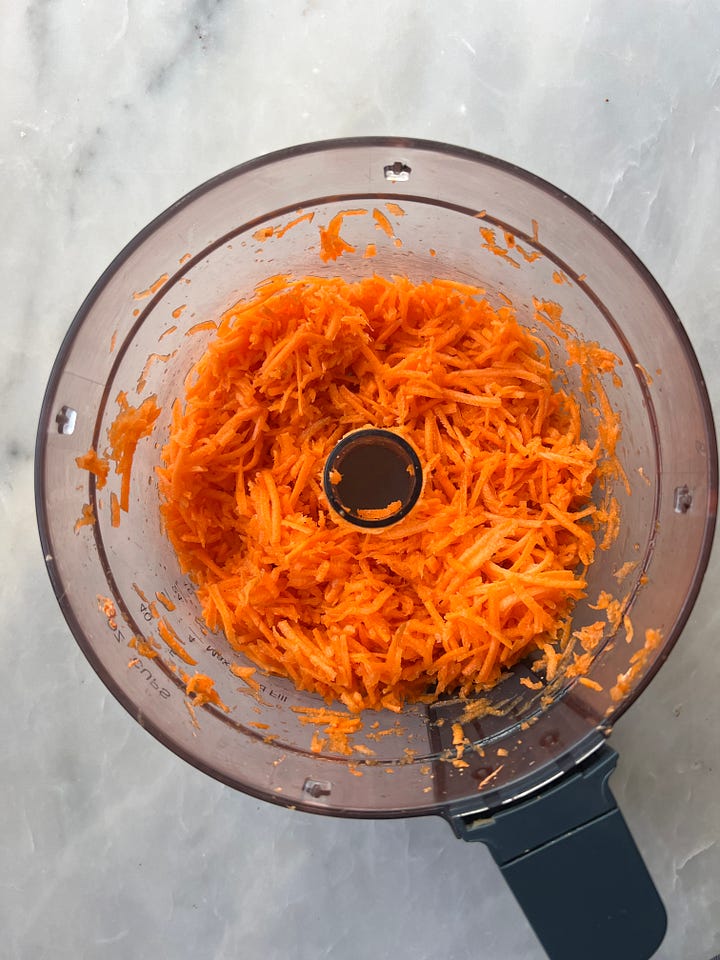

Take a look at the carrots above. I shredded them on the smaller holes of my food processor grater. They are in very thin strips, but if you only have a handheld grater with small holes, you might get carrot pieces that are smaller or thinner, which is fine that just might mean more water is released and you end up with a slightly wetter batter, which means a few more minutes in the oven. If you use pre-shredded carrots, which have lost a lot of their moisture, you will not have a good time.
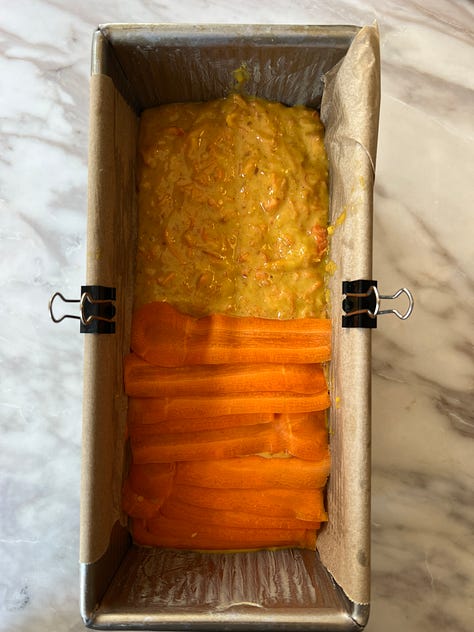

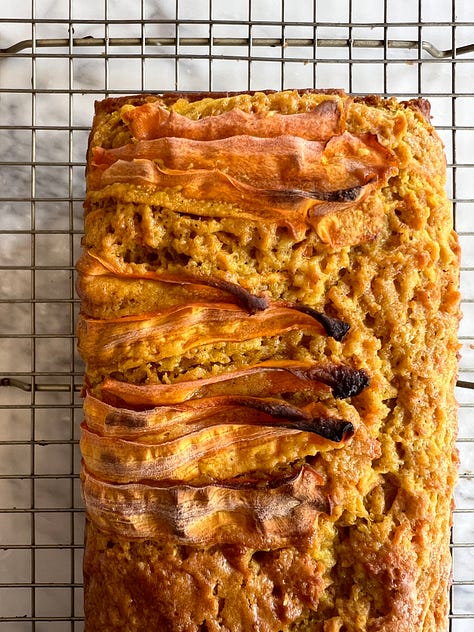
I tested one batch with shaved carrot ribbons baked right into the top of the loaf, which was pretty! But I decided to go with a lemony-turmeric glaze poured over top that brings even more flavor, a bit of zing and a pretty pastel color to the whole deal. If you want to opt out of the glaze, try the ribbons, or, leave it unadorned.
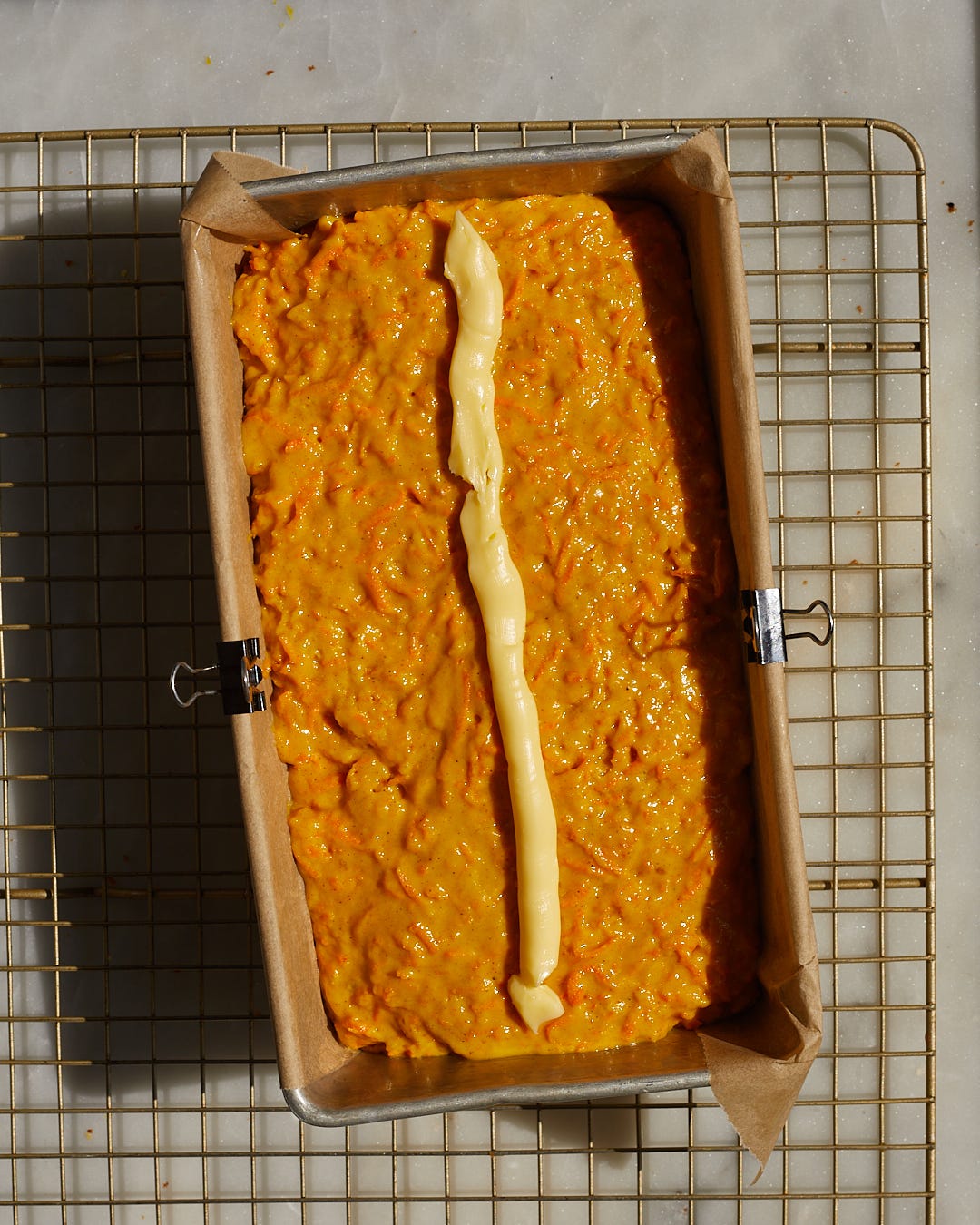
I tested this in a pullman tin, which is taller and narrower than a 9x5-inch tin, and has straight sides, not sloping. But I also made sure to give it a test in the 9x5-inch tin, which I know is the one most people have. I’ll give directions for both but all you need to know is both work great the pullman tin just takes a bit longer to bake.
***Now, I used a new jar of Whole Foods ground turmeric to develop this recipe. Grocery store spices in general are not as potent as those that are fresher or more directly-sourced. So if you know you have really good turmeric, perhaps stick with 2 teaspoons in the batter and start with just 1/8 teaspoon in the glaze (and adjust the glaze from there). Or if you love the flavor of turmeric, go all in with 3 teaspoons (1 tablespoon). Also, if your turmeric is a few years old, maybe spring for a new jar; the difference between my stale years-old jar and the new jar was pretty staggering. (And while you’re at it, replace your baking soda and baking powder too!) I found that my generic, grocery-store brand turmeric needed 2.5-3 teaspoons in the batter to get the flavor across.
Turmeric Carrot Cake Bread
Makes one 9x5-inch loaf
Ingredients
Cake
10 ounces finely shredded carrots (about 2 1/4 packed cups, do not use pre-shredded carrots)
Juice of half a lemon
2 1/4 cups all-purpose flour (293 grams)
3/4 teaspoon baking soda
1 3/4 teaspoons baking powder
1/2 teaspoon kosher salt
1/4 cup granulated sugar (55 grams)
3/4 cup light brown sugar (143 grams)
2-3 teaspoons ground turmeric (depending on the strength of your turmeric — see above***)
1/2 teaspoon ground cinnamon
1/2 teaspoon ground ginger
2 large eggs
1 teaspoon vanilla extract
1/2 cup olive oil (116 grams)
1/2 cup full-fat Greek yogurt (121 grams)
Glaze
1 cup powdered sugar
1/4 teaspoon ground turmeric
1 tablespoon lemon juice, plus more as needed (from about half a lemon)
Directions
Preheat oven to 350°F. Grease a 9x5-inch loaf tin and line with a sheet of parchment going across the long sides, leaving some overhang to lift the loaf out of the tin when its baked.
Combine the shredded carrots with the lemon juice and a hefty pinch of salt (you can do this in the bowl of the food processor) and allow to sit while you make the batter.
In a large mixing bowl, whisk together the flour, salt, baking soda and baking powder.
In a medium mixing bowl, whisk together the sugars with the turmeric, cinnamon, and ginger, breaking up any lumps. Whisk in the eggs, vanilla, oil and yogurt until smooth. Fold in the carrots and any juices that have accumulated.
Make a well in the dry ingredients. Pour the carrot mixture into the well and stir working in a circular motion from the inside out, slowly bringing the dry into the wet ingredients. Continue folding, scraping the bottoms and sides of the bowl, just until there are no remaining streaks of flour.
Pour the batter into the prepared tin and level it off. With a greased knife, cut a shallow line running down the center of of the batter (this helps to create an even crack — you can also do this by piping a thin line of softened butter down the center, as seen above).
Bake on the middle rack for about 55 to 60 minutes for a 9x5-inch tin, or about 60-65 minutes if using a taller, pullman-style tin. Check the internal temperature of the cake in the very center; it should read around 200-205°F. Alternatively, a wooden skewer placed into the center of the cake should come out clean or with just a few moist crumbs.
Allow the cake cool in the tin for 5 minutes then lift it out of the tin using the parchment sling and allow to cool completely on a wire rack.
Once the cake has cooled completely, make the glaze. Mix together the powdered sugar, lemon juice, and turmeric (start with 1/8 teaspoon and add more if desired). The glaze should be very thick but still relax into itself after 5 seconds or so. If it’s too thick, add a few more drops of lemon juice. Spread evenly over the top of the loaf, encouraging it to drip down the sides. Allow the glaze to set, and serve!




